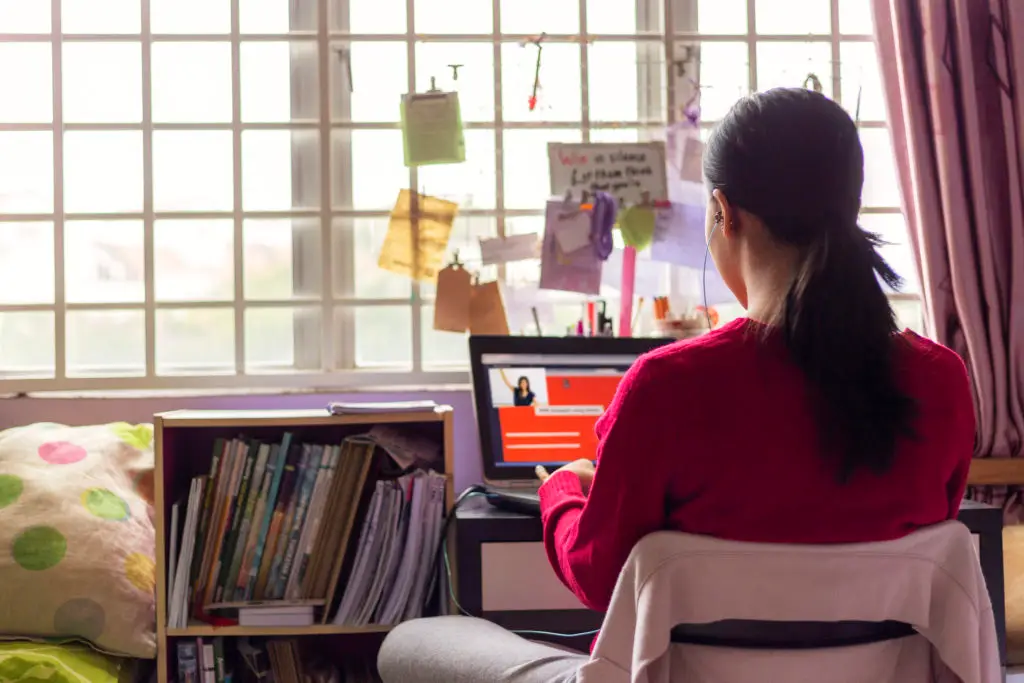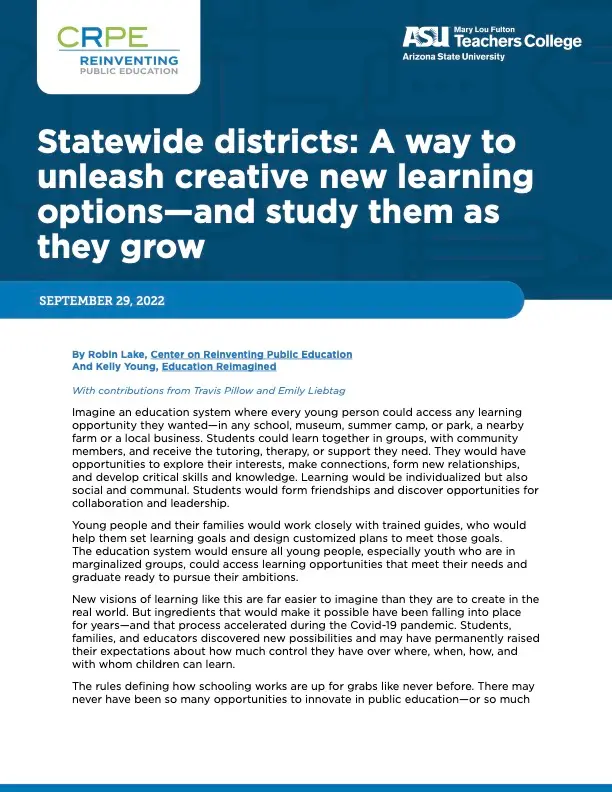An abundance of opportunities to innovate in public education have emerged post-pandemic and the rules for defining how schooling works are up for grabs like never before. Yet, school districts are struggling to keep teachers on the job and schools open, much less address the mental health and academic toll of the pandemic. How can school systems possibly find the bandwidth to act on new visions for public education when their leaders are constantly trapped in crisis mode? One particular mechanism might allow them to pull this off: statewide school districts.
This report outlines several existing statewide oversight efforts that overcome barriers that traditionally constrain schools or traditional districts. The report also explains how statewide districts could promote creative new learning options, including the following:
- Providing infrastructure and support to allow cities, community groups, or even individuals to form small learning communities.
- Creating a statewide system to validate students’ learning, and to provide credit for those efforts.
- Allowing youth to access a variety of service providers and mentors.
- Ensuring all families can access educational options.
- Conducting or commissioning research on K-12 education innovations.
We can’t afford to allow possibilities that came into view during the pandemic to vanish in a rush to return to normal school operations, nor can we afford to watch innovations flourish outside of public education but remain inaccessible to students who stand to benefit from them. We need to build public-education systems that encourage and support innovation—and we need new state policies to help encourage those actions.






